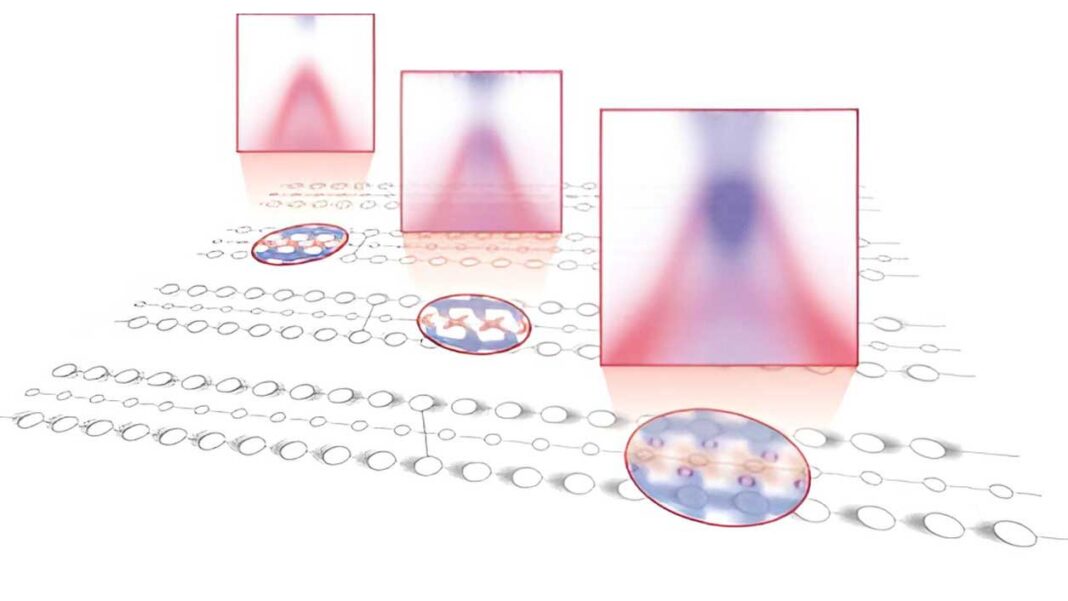Metal-to-insulator transition. Turning materials from conductors to insulators, known as the metal-to-insulator transition, is crucial for microelectronic switches and other technologies. This transition often involves significant changes in the material’s electronic or structural symmetry, impacting its properties.
Professor Yu He’s study, published in Physical Review Research, explores achieving this transition without breaking material symmetry. The research shows that a strong connection between electrons and a vibrating atomic lattice can turn a metal into an insulator without disrupting the lattice pattern, providing a new way to induce this transition. He, assistant professor of applied physics, said, “ Metal-to-insulator transition has been an enduring theme in condensed matter physics research because it often involves the electrons changing their own rules of organization between two fundamentally different states.
” “To “trick” the material into such a transition without disrupting its underlying symmetry, the key here is to exploit the massive fluctuations of the atomic positions when the material is quasi-one-dimensional. ” “To put it in plain English, the material must have a chain-like crystal structure motif. That’s how we found the needle-like material Ta2NiSe5.
” In understanding the metal-to-insulator transition, electron-electron Coulomb interaction and electron-lattice coupling play roles without breaking symmetry. Professor Yu emphasizes the challenge of quantitatively determining interaction parameters in Schrödinger’s equation for real materials. He and his team took a dual approach to address this, combining in situ angle-resolved photoemission spectroscopy and x-ray diffraction for a microscopic view.
Collaborating with Prof. Yao Wang’s team at Emory University, advanced model calculations produced a digital representation capturing the material’s properties, including the symmetry-preserving metal-to-insulator transition induced by electron coupling to lattice fluctuations. The Born-Oppenheimer approximation often holds in bulk materials, where heavy, slow-moving atoms vibrate, and electrons quickly follow due to their significantly lighter mass.
He said , “However, when the materials are quasi-one-dimensional, the atomic lattice often violently fluctuates, and sometimes the electrons can no longer keep up with every twist and turn the atoms make. Then they throw their hands in the air and say, ‘OK, I quit. ’ That’s when you get an insulator.
But the atoms have yet to break symmetry – they just oscillate around their original, static position. ” “With the rapid development of advanced spectroscopy and modern computational methods, this work not only reveals low-dimensional fluctuations as a largely untapped source to engineer novel properties in quantum materials. It also offers a more general framework to “sequence the materials genome” by directly measuring the microscopic interactions strengths in minimal quantum many-body models of these materials.
” “Once we have their quantum DNAs in hand, these complex materials will be a lot more tameable for predictive materials engineering. ” Journal Reference:.
From: techexplorist
URL: https://www.techexplorist.com/preserving-atomic-symmetry-innovative-processes/79714/



